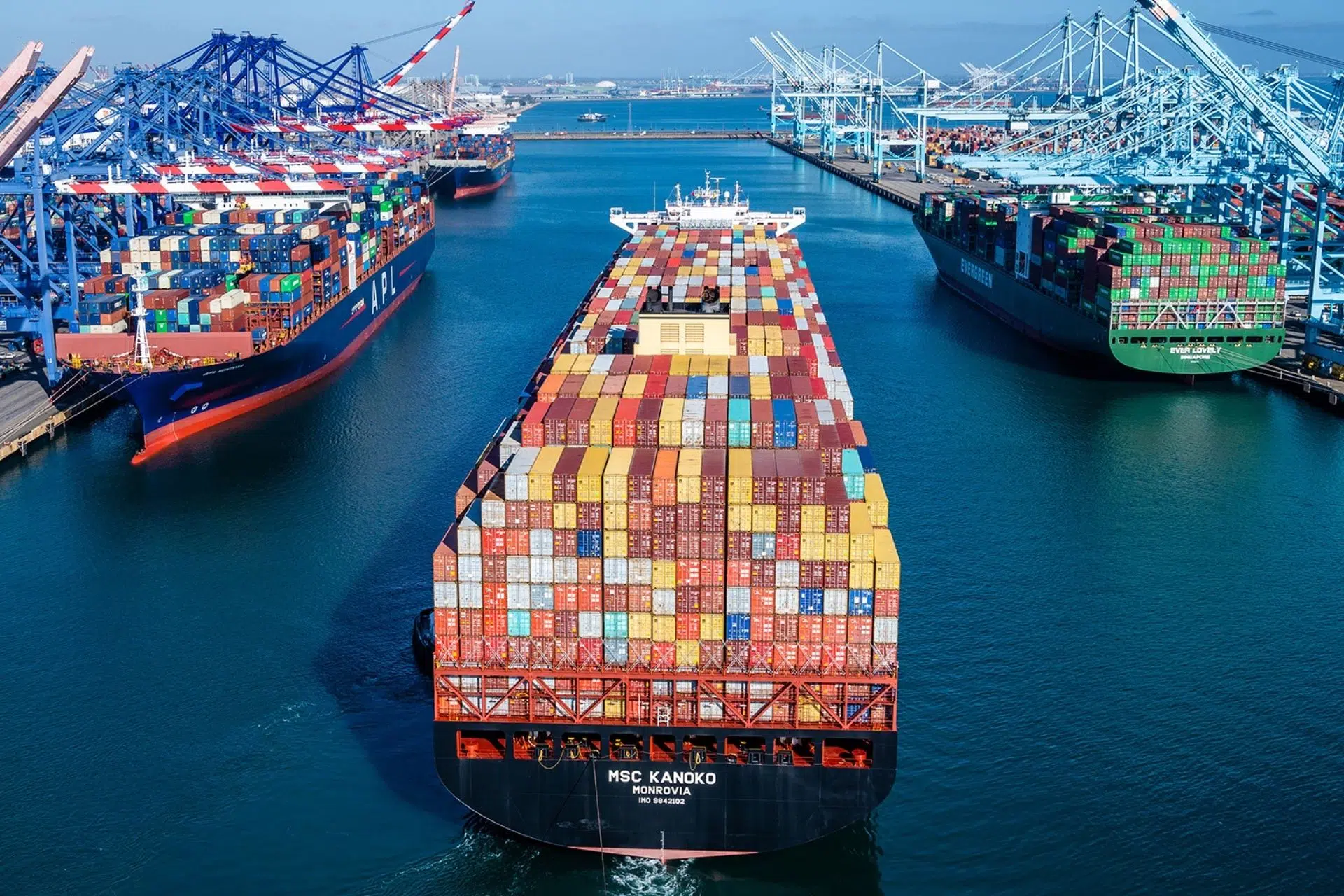Import cargo volume at the nation’s major container ports has hit its expected peak for the year and looks to gradually slow heading into the holiday season, according to the Global Port Tracker report released today by the National Retail Federation and Hackett Associates.
With consumers wary of the economic outlook for the United States, with inflation and high-interest rates weighing in, discretionary spending growth is slowing, which has been causing retailers to reign in their importing, at least to an extent, Hackett Associates Founder Ben Hackett reported. Consumer spending grew 1.8% year over year in the second quarter rather than the 2.3% originally estimated, and NRF said last month that retail sales for the year could come in at the low end of its forecast of 4%-6% growth versus 2022.
Inbound volume at U.S. ports covered by Global Port Tracker was forecast to reach 2 million Twenty-Foot Equivalent Units in August and stay at that level through October. Instead, ports handled 1.96 million TEU — one 20-foot container or equivalent — in August, which is the latest month for which final numbers are available. The volume gained 2.3% from July and was the busiest month this year so far this year, but it is still down 13.5% year over year. Ports have not reported September numbers yet, but Global Port Tracker projected the month at 1.94 million TEU, down 4.3% year over year. The October forecast for 1.94 million TEU is down 3.1% year over year.
However, November’s forecast is for 1.91 million TEU, a 7.5% increase from the month last year, which would be the first year-over-year gain since June 2022. December is forecast at 1.88 million TEU, up 8.9% year over year.
Including forecasts, the numbers would bring 2023 to 22.1 million TEU, down 13.5% from the year earlier. Imports for 2022 totaled 25.5 million TEU, down 1.2% from the 25.8 million TEU annual record set in 2021.
The January 2024 forecast is level with December at 1.88 million TEU, up 4.2% year over year. February, historically the slowest month of the year because of Lunar New Year factory shutdowns in Asia, is likely to reach 1.74 million TEU, up 12.7% year over year.
“Cargo volumes will still be strong the rest of the year, but not as high as we expected a month ago,” said Jonathan Gold, NRF vice president for supply chain and customs policy. “Retailers stocked up early this year as a safeguard against supply chain labor issues and are well-situated to meet consumer demand. Shoppers are spending more than they did last year, but the rate of growth we’ve seen the past couple of years has slowed and retailers are working to strike the right balance of supply and demand.”
Hackett maintained, “We are already seeing this in the operational decisions carriers are making. They have slowed down their ships in an attempt to cut capacity without having to take vessels out of service as new, larger ones ordered when demand was higher are delivered. Even so, ships are not sailing fully loaded, and freight rates are declining as a result. That’s a further indication that no cargo growth from current levels is expected on the near-term horizon. Perhaps 2024 will be better.”
Global Port Tracker, produced for NRF by Hackett Associates, provides historical data and forecasts for the U.S. ports of Los Angeles/Long Beach, Oakland, Seattle and Tacoma on the West Coast; New York/New Jersey, Port of Virginia, Charleston, Savannah, Port Everglades, Miami and Jacksonville on the East Coast; and Houston on the Gulf Coast.





